The Math Behind the Medals: Professor Ken Ono Is Helping Virginia Revolutionize Swimming Performance
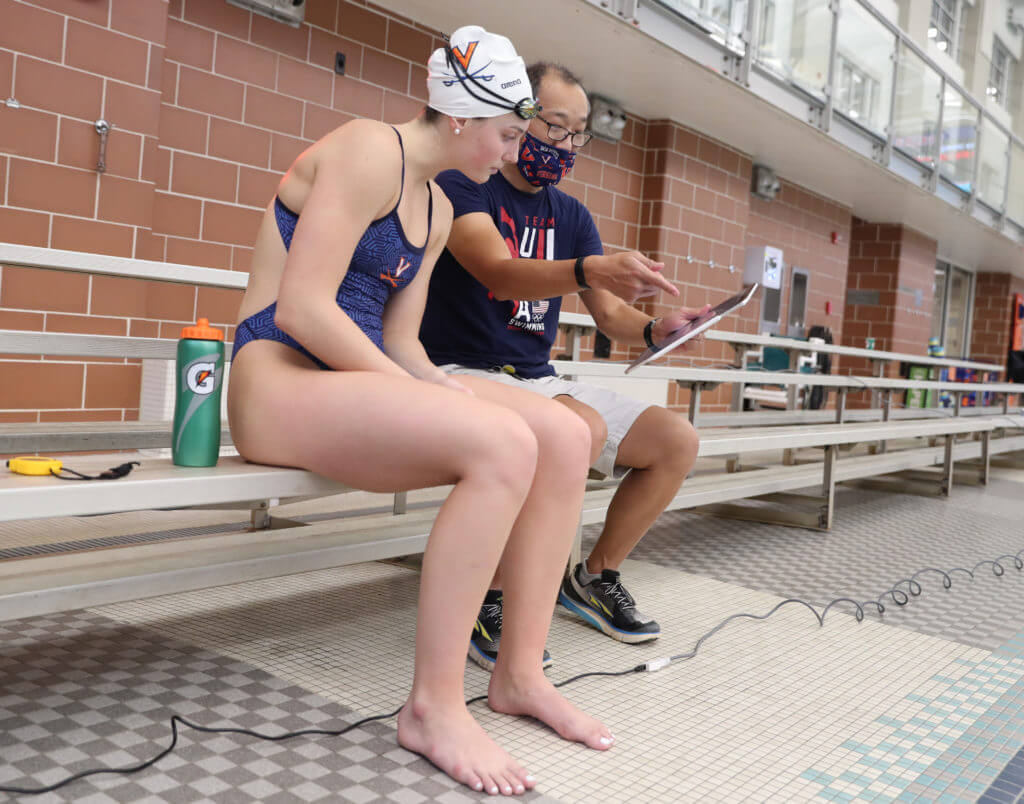
A Special Thanks to Deep Blue Media for providing the images from this meet The Math Behind the Medals: Professor Ken Ono Is Helping Virginia Revolutionize Swimming Performance Ken Ono spent the spring of 2021 trying to convince Paige Madden of the merits of her 400 freestyle. Madden, then a senior at the University of Virginia, had a stellar NCAA season, sweeping national titles in the 200, 500 and 1,650 free. As she approached Olympic Trials, she perused the psych sheets and made what seemed a logical conclusion – seeded seventh in the 200 free, which would send six to Tokyo for the 800 free relay, seemed like her likeliest path to a plane ticket. The 400 free, in which she was seeded 11th and chasing realistically one spot behind Katie Ledecky, would be a longshot, one she strongly considered scratching. Ono, a professor of mathematics at UVA, saw it differently. Yes, Madden had never gone quicker than 4:09.19 in her career, at Nationals in 2019. But Ono’s team at UVA had analyzed Madden’s technique using a set of sensors and underwater cameras. Ono felt the data showed Madden, rested and executing, could go 4:03, which projected as good enough for an individual swim in Tokyo. “Her mindset going into trials was, to make the Olympic team, I want a spot on the 800 free relay,” Ono told Swimming World recently. “I had been telling Todd (DeSorbo, UVA head coach) and Paige, you really want to be focusing on the 400 free. … Our speculation was that Paige would have almost a near lock to make the Olympic team.” That forecast came true – Madden storming back on the final 50 to finish second at Trials in 4:04.86 to get to Tokyo, where she found that 4:03 (a 4:03.98) for seventh place. She also finished third in Omaha in the 200 free, making what would become a silver-winning 800 free relay, one of five women’s medals at the Games for Americans associated with UVA. Madden represents one of the most notable success stories of the secret weapon fueling UVA’s recent resurgence, Ono’s research team for “mathematical optimization” of performance. Charlottesville presents an ideal give and take – a receptive atmosphere to new ideas, with a steady supply of both athletic talent and intellectual curiosity to take Ono’s team to new heights. As much as Virginia is building a roster of elite national-team swimmers, Ono is assembling a tree of former research assistants in this discipline – a group that includes current swimmers Sean Conway, Lexi Cuomo and Jaycee Yegher – to lead the Cavaliers from within. It’s serving as a springboard to big things, in the pool and out. Ono’s interest in swimming started, quite literally, at home. His career in mathematics was already extremely distinguished before he ever strapped an accelerometer to a swimmer. An algebraic number theorist, Ono has helped illuminate complex concepts in the nature of numbers. (We’ll leave you to google, “umbral moonshine conjecture” for yourself.) His father, Takashi Ono, was a professor of mathematics at the University of Pennsylvania and Johns Hopkins University, the latter for 42 years. Both of his brothers have had distinguished academic careers – Momoru Ono is a Juilliard-trained musician who has taught at colleges across the country; Santa Ono is the president of the University of Michigan (after leading the University of British Columbia and University of Cincinnati). Dr. Ken Ono, left, and Virginia head coach Todd DeSorbo; Photo Courtesy: Matthew Kent Riley/University of Virginia All three endured a demanding upbringing, one that led Ken Ono to drop out in his first attempt at college. He sought refuge in athletic pursuits, which had been discouraged as non-productive growing up, and became an international triathlete. He completed his degree in mathematics at the University of Chicago and a Ph.D. at UCLA (his thesis concerns Galois representations). Ono has taught at the University of Georgia, the University of Illinois, Penn State, the University of Wisconsin and Emory University, where he worked from 2010-20. His son, Sage Ono, became an accomplished swimmer at SwimAtlanta before enrolling at Emory. He helped the Eagles win their first NCAA Division III Championship in 2017, claiming national titles on a pair of relays as a freshman and adding the 100 back NCAA crown as a sophomore. (In keeping with the general theme of Ono excellence, Ken’s daughter Aspen Ono was an elite figure skater.) By the time Sage Ono enrolled at Emory, Ken was already working with another student curious about the implications of quantitative analysis of swimming. Andrew Wilson was a physics & applied mathematics major hoping to walk on to the swim team. He’d been a good swimmer in high school but knew he needed to improve to meet the level of even an elite Division III program. As they got talking, and as the voluminous and multidisciplinary rolodex of knowledge churned in Ono’s mind, the professor wondered if he might be able to connect the dots between sports performance analytics in programs like Norway’s elite cross country skiing squad and swimming. “He just had this crazy idea of, there’s so much sports science being done and being applied to other things,” Wilson said. “How can we apply this to swimming?” Wilson was one of the first to benefit. He arrived at Emory as a 59-mid in the 100-yard breaststroke. By his junior year, he was a D3 champion at 51.72. He would go on to a pair of A finals at 2016 U.S. Olympic Team Trials and won national titles later that summer. At age 27, he became the first D3 swimmer to make an American Olympic team, making an Olympic final in the 100 breast and winning gold in the men’s medley relay. His work with Ono was the pivotal inflection point in that journey. “He’s one of those people that’s just incredible to be around,” Wilson said. “I think his mind just works in a different way that’s more efficient and creative than anyone else could really hope to be. Being around him was always so incredible, taking his courses every year at Emory, you’re sitting in the same room and leaning from someone who is incredibly kind and a great teacher but also is one of the most brilliant mathematicians in the world. His energy and his love for what you can do with math is infectious.” It’s not lost on Ono that this part of his career diverges sharply with his research interests. While he explorers immensely abstract and esoteric academic concepts, his work in the pool is applied and tangible. He finds both sides of that dichotomy distinctly and uniquely satisfying. “I like to solve problems that are a hundred or 200 years old that people haven’t made progress on because there’s a little bit of glory in that, and that’s like my drug,” he said. “If I know that people have struggled with a problem and I’m somehow able to solve it, I live for that. What is it about the stuff that we’re doing here that drives me? When I prove a big theorem, I might win a big prize, I might get written up in Scientific American, but most people have no idea what I’m talking about and that’s not very satisfying. “Being able to participate in a project like this with great people, it’s super fun. Who doesn’t like sports? It definitely is a different aspect of my job.” Ono left Emory in 2019 for Virginia, taking his swimming research with him. But it wasn’t until his team grew that the research reached its true potential. Much of that had to do with Jerry Lu. A swimmer at Nation’s Capital Aquatic Club and the Landon School in the class of 2018, Lu was attracted to UVA’s academics, but the rapidly increasing quality of their swim team exceeded his athletic grasp. As a sophomore, though, he found a way to get involved, via Ono’s blossoming performance analysis. Researcher Jerry Lu, left, talking with UVA swimmer Emma Weyant during a test protocol in 2021; Photo Courtesy: Matthew Kent Riley/University of Virginia Lu, a double-major in systems engineering and economics, carried the humble sounding title of technical performance consultant.” But to Ono, Lu was instrumental in standardizing data collection and analysis. Ono had put athletes at a number of top programs across the country through testing batteries before coming to UVA as he refined the test protocols and data analysis. But Lu took those even further, with online dashboards to allow swimmers to access data and track their progress. “This was obviously a really cool way for me to stay in touch with swimming at the highest level,” Lu said. “Obviously I always wanted to continue to swim in college, but with UVA becoming the way it is since 2018 and 2019, this is just a very, very unique way for me to stay in touch and to help. I’m always learning something from everyone that I’ve worked with, with Ken obviously. It’s a very unique way to connect swimming to what I want to do in the future.” The test battery is standard in intent, though tailored to each different individual’s aims. Swimmers are fitted with a belt housing accelerometers and other sensors to pick up on tiny variations too subtle or too fast for the eye to discern. The data is correlated with video captured from an array of cameras recording in the pool. Test subjects go through a battery of swims to, as Lu said, “see what breaks.” For Madden, whose analysis Lu conducted, that meant a set of 75s at 400 free race-pace. The analysis allows Ono’s team to pick up minuscule differences – where a dolphin kick off the wall might fade, for instance, or inefficiencies in body line causing drag. They also track how certain aspects of the stroke may fade over time, from the first rep to the last. (Madden saw improvement, for example, by increasing strength on the right side of her body to match her left.) The guiding principle is not standardizing but optimizing. The analysis is equally applicable for all four strokes. It doesn’t seek a one-size-fits-all solution but maximizing each swimmer’s particularly stroke. And it’s not exclusively about turning elite swimmers into gold medalists but about helping a swimmer at any level improve. “I think the really beautiful thing about looking swimming in that everybody swims differently,” Conway, a senior backstroker and IMer, said. “Everybody has a stroke and everybody has a technique that’s going to fit their body, going to fit their gait, going to fit their aerobic capacity in very different ways. What this comparison allows us to do is find an optimal way for them to operate to the best of their ability rather than just find some cookie-cutter technique that will never be attainable.” The most notable successes of Ono’s program, given the talent of the inputs, just happen to be NCAA and Olympic contenders. His team has worked with a number of the swimmers fueling UVA’s back-to-back-to-back NCAA women’s championship teams. Alex Walsh underwent the testing upon her arrival to campus in the fall of 2020. A computer science major who is no stranger to complex topics, her eyes were opened by seeing her swims in graph form. In a conversation with Walsh and DeSorbo, Ono concluded from the analysis that Walsh, who’d been a 2:11 in the 200-meter individual medley before coming to Virginia, had a 2:07 in her, with a few small adjustments to her butterfly and freestyle. Dr. Ken Ono, left, with Emma Weyant; Photo Courtesy: Matthew Kent Riley/University of Virginia Walsh was taken slightly aback by that prognostication, but she followed the suggestions that “completely changed my training program.” Two years later, Walsh went 2:07.13 to win gold at the World Championships in Budapest, following up Olympic silver in the event and as a prelude to silver at Short-Course Worlds in December (behind UVA teammate Kate Douglass). “I remember him mentioning a time and it definitely was a blunt delivery,” Walsh said. “But he was like, if you just fix this, then you’ll do this. It was very funny hearing him say, I only have to fix this one aspect of my stroke and I will be able to drop this much time, because that’s how much more efficient my stroke will be. That was pretty crazy to think that changing an aspect of my stroke – not even my endurance – was going to be able to drop a second or a second and a half. He was right. I got there.” Walsh wasn’t alone among American female medalists in Tokyo UVA connections. A step below her on the 200 IM podium was Douglass, who went on to assemble one of the most impressive NCAAs in history in 2022 and 2023. Madden’s relay silver was complemented by Virginia postgrad Catie DeLoof earning bronze in the 400 free relay, while Emma Weyant, now at Florida, took home silver in the 400 IM. Weyant was a significant beneficiary from analysis by Ono and Lu: She went from 4:38 in the 500 free before college to 4:34 at NCAAs in 2022, mostly behind an adjustment in when she started her flip turns that gained up to three-tenths of a second per turn. Ono has worked with Cavalier Aquatics’ Thomas Heilman, who spent most of 2022 obliterating national-age group records. His methods are applicable up and down the UVA roster, so much so that Lu and Ono found themselves occupying pride of place as something between superfan and de facto coach in the Virginia swimming orbit. “When we show up at practice or at a meet,” Ono said, “even though we’re not really part of the family, we feel like we’re part of the family, whereas (in our work) we’re kind of invisible.” Ono devised the strategies to examine performance. Lu made strides in analyzing the data and synthesizing conclusions. But a vital part of the process is how the message is delivered, which is where the swimming research assistants come in. Ono sees UVA’s culture as vital. It probably doesn’t hurt to have a non-number-shy coach in DeSorbo, who has a master’s degree in accounting, either. Conway points to a “culture of communicating” that applies throughout the program and eases the barriers of presenting data. “Something like taking a little bit more of technical approach isn’t exactly much of a difficult jump,” Conway said. “I think what these reports allow us to do, especially when we talk about them this much, is we’re able to be that segue between the coaches and the athletes.” Dr. Ken Ono with Paige Madden; Photo Courtesy: Matthew Kent Riley/University of Virginia Yegher has had a unique journey. She is the Ivy League record holder in the women’s 200 breast, having spent three years at Harvard. But she lost two entire seasons to the COVID-19 pandemic and shoulder surgery before taking a grad year in Charlottesville. With the help of Ono’s analytics, she set her best college time in the 100 breast at 59.18 during the fall invitational season. Working with her teammates in such an intimate yet structured way has eased her transition to a new program, especially one with such an established recent tradition. “As a newcomer to the program, this research was a great way to connect with my teammates and contribute to the team in a unique way,” Yegher said. “I feel honored to be trusted by my teammates and coaches to do this work. I think to involve Sean and I in this way points to the idea that the best teams lead from within and everyone has a role to play.” Both Conway and Yegher have had Ono’s analysis done on their swims. Conway went through it once before joining the research team, then again afterwards. It helped him fine-tune both his stoke and his research approach, being on the other side of receiving that information. Yegher revamped her entire breaststroke pullout after working with Lu on an analysis. For both, the ability to pull apart and analyze their sport has deepened their affection for swimming. “I think this is such a beautiful way to contribute to the team and have a relationship with the sport that is also academic as well as athletic,” Yegher said. Success out of the pool has followed many of the swimmers Ono has worked with. Lu is studying for his master’s degree in financial engineering at MIT’s Sloan School of Management. Wilson earned his master’s in mathematical modelling and scientific computing from the University of Oxford. Yegher already has her degree in global health and health policy and is pursuing a master’s in public health. Ono was the Ph.D. advisor to Maddie Locus, a standout at Georgia who won gold in the 400 free relay at the 2015 World University Games. Madden, who graduated with a degree in kinesiology, went on to join Ono’s team as a research consultant. One of Ono’s passion projects is the Spirit of Ramanujan STEM Talent Initiative, which seeks to match gifted young mathematicians from non-traditional backgrounds with resources and mentors. His zeal for mentorship for his stable of research assistants is in the same vein. “We’re an elite public university, and I think what’s special here is not just the idea of making swimmers faster,” Ono said. “It’s doing that in conjunction with the training of real motivated students.”

The Man Behind the Math
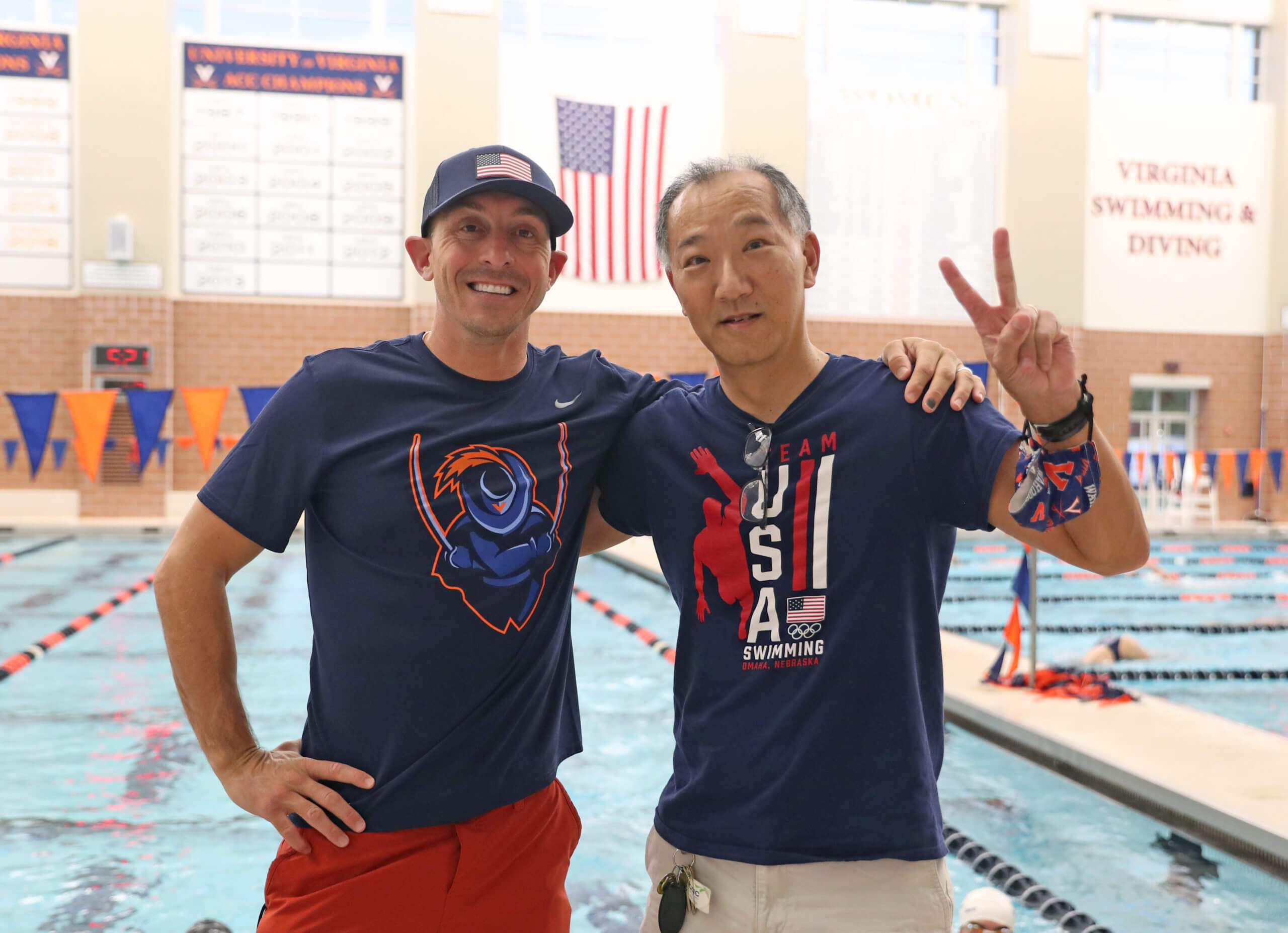
Reaching the Next Level
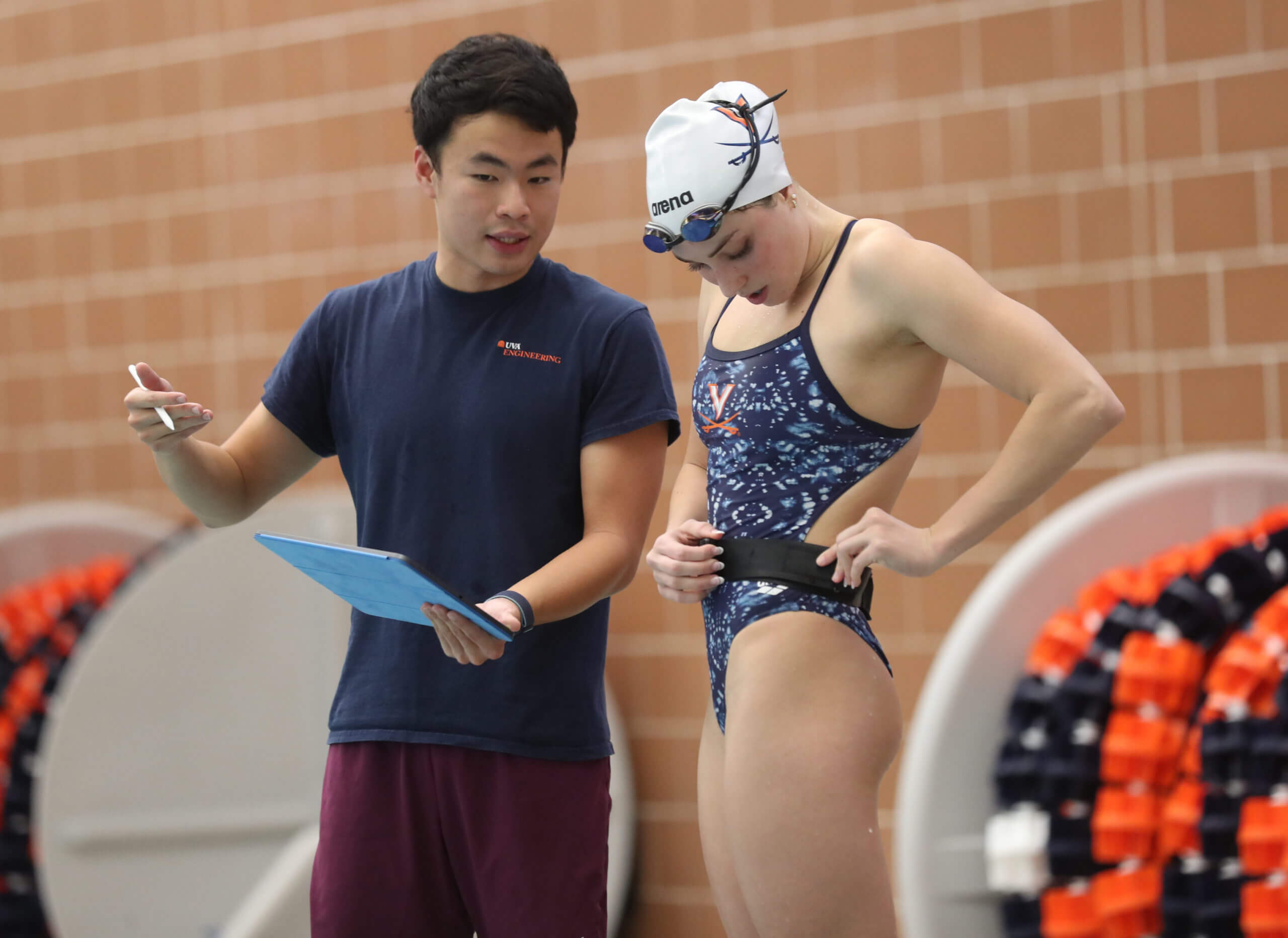
Proving its Medal
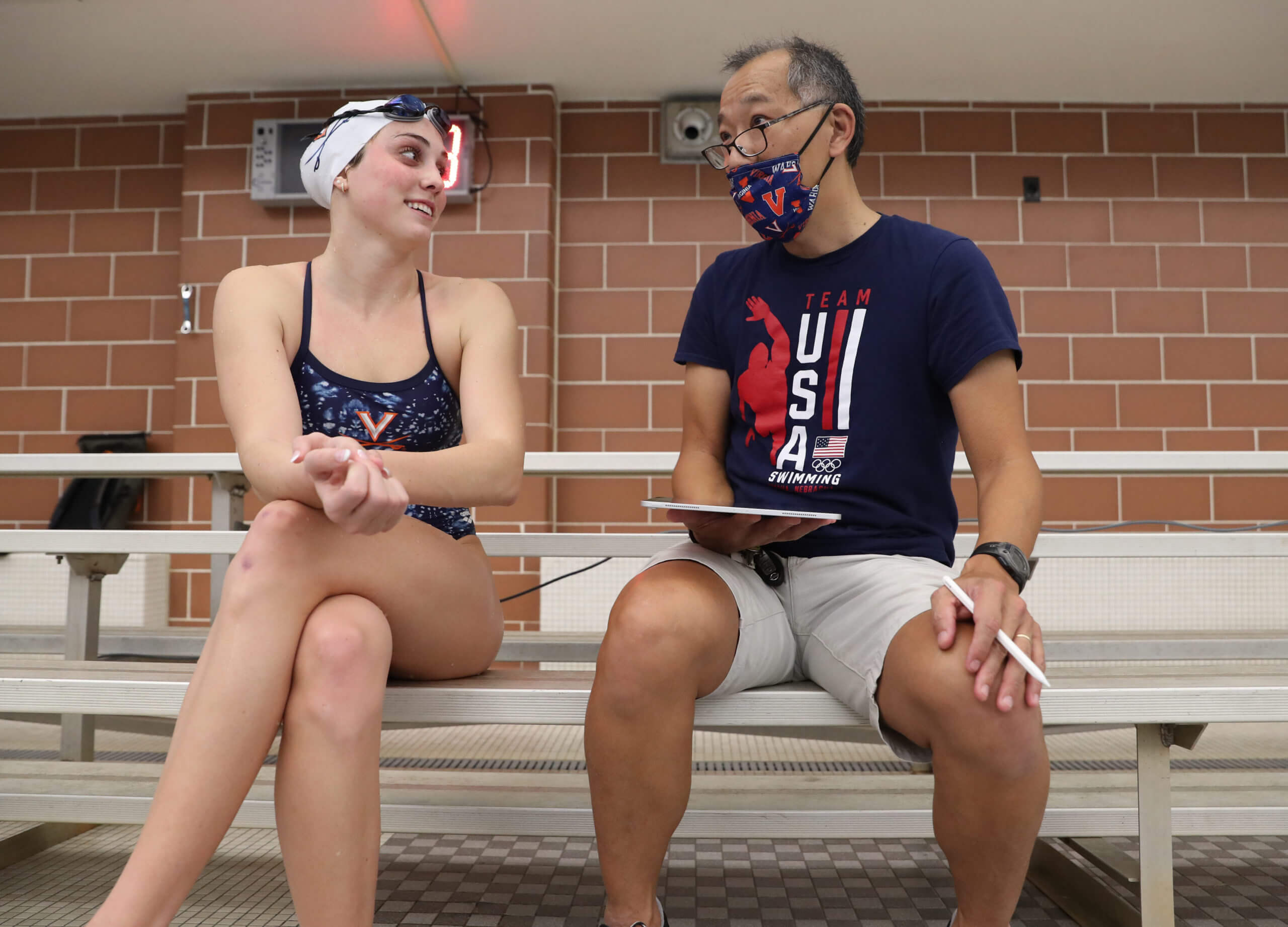
The Secret Ingredient’s Secret Ingredient
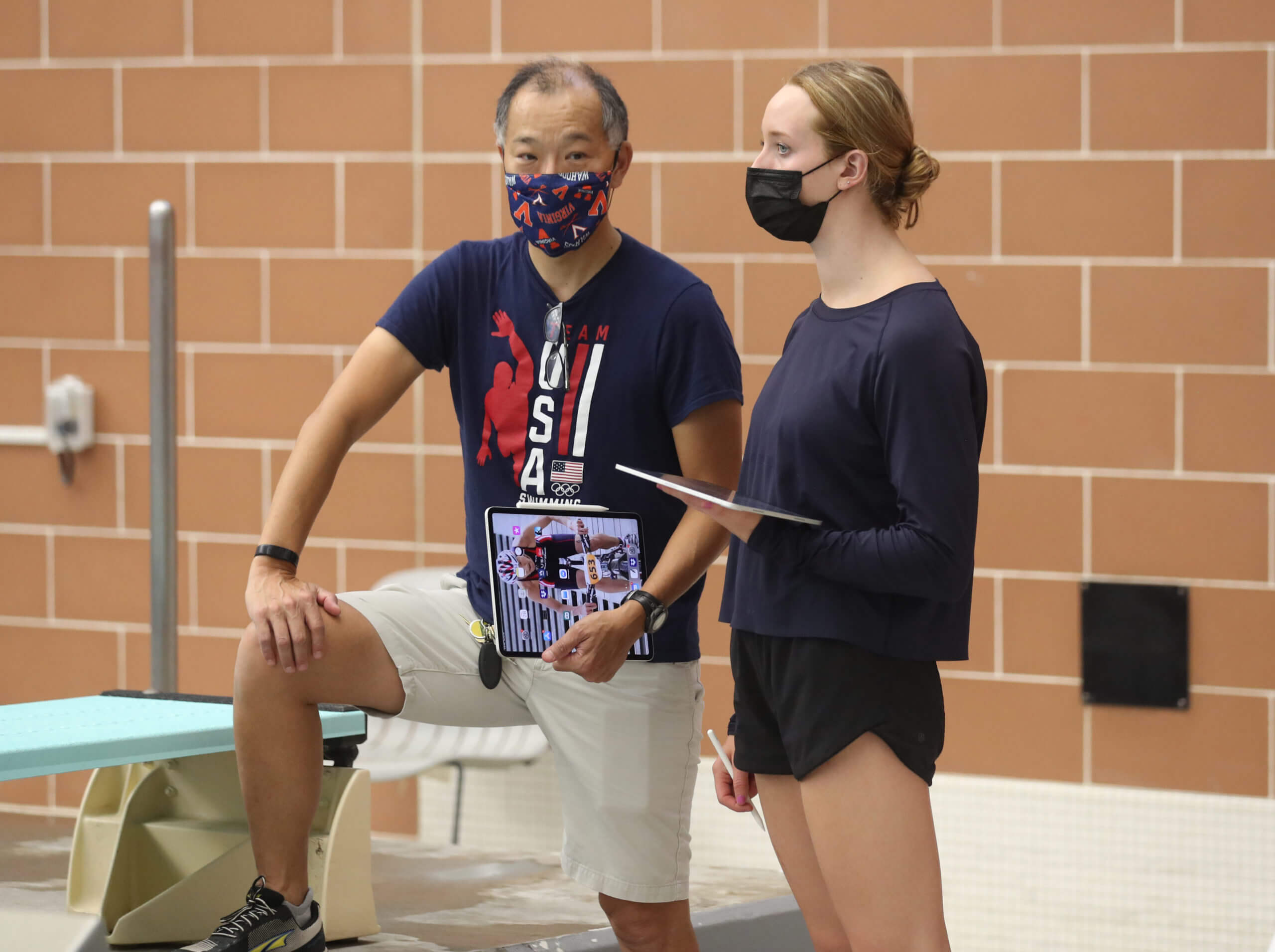





I have always studied different ways to make my age group and collegiate swimmers faster, not have the hard numbers as to how. I am able to communicate very well with swimmers who want to improve, but lack the understanding on how to get there.
Thank you for this incite, if only I had your brain and equipment to conduct my team of swimmers. Please add me to your research if there are system you would like to experiment with, please contact me.
Paul Howard
810-326-2589
Paullhoward1969@gmail.com
So incredibly interesting! Way to ho UVA for thinking and believing out of the box! I would love to see Dr. Ono’ work in action!!!